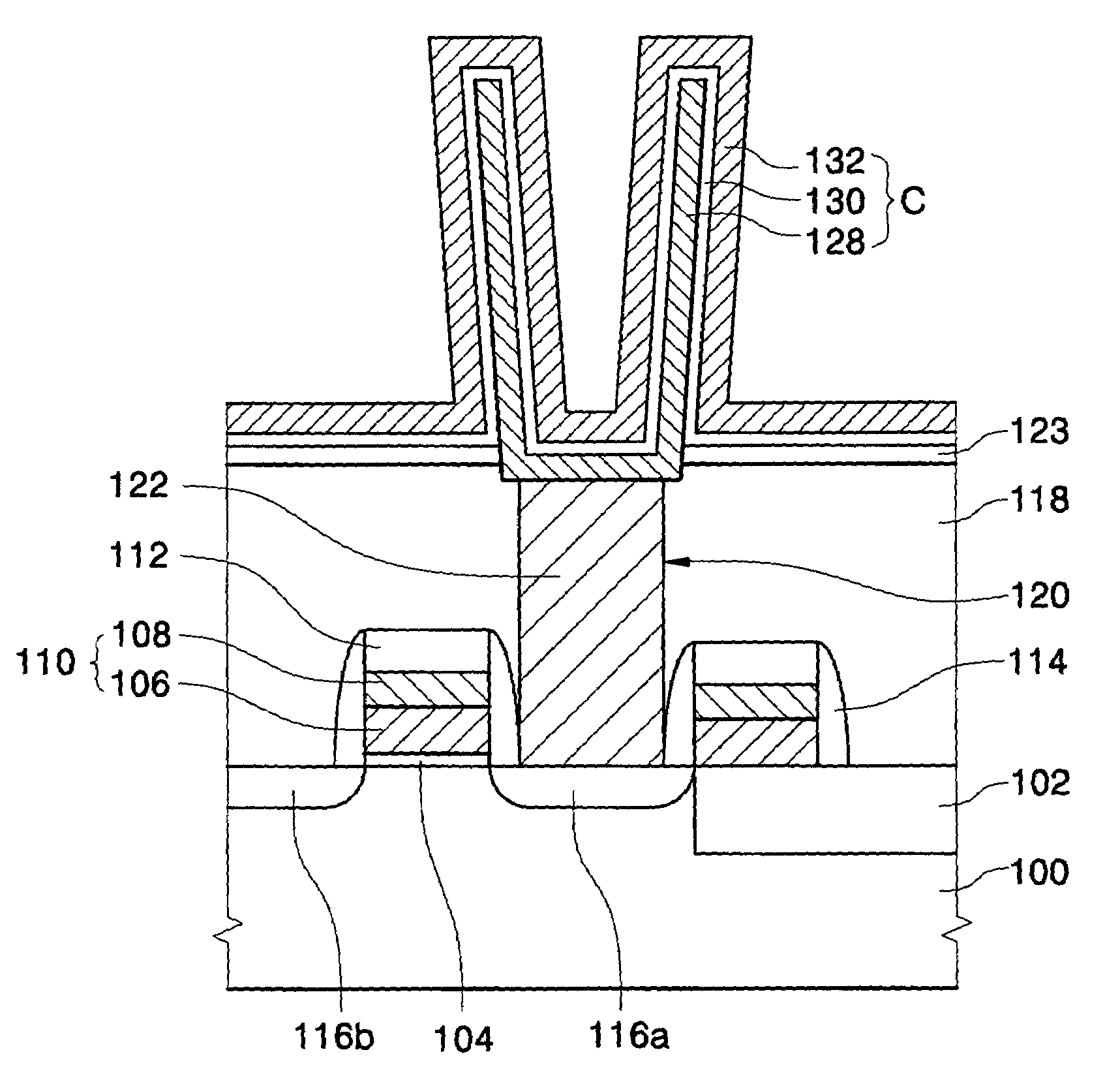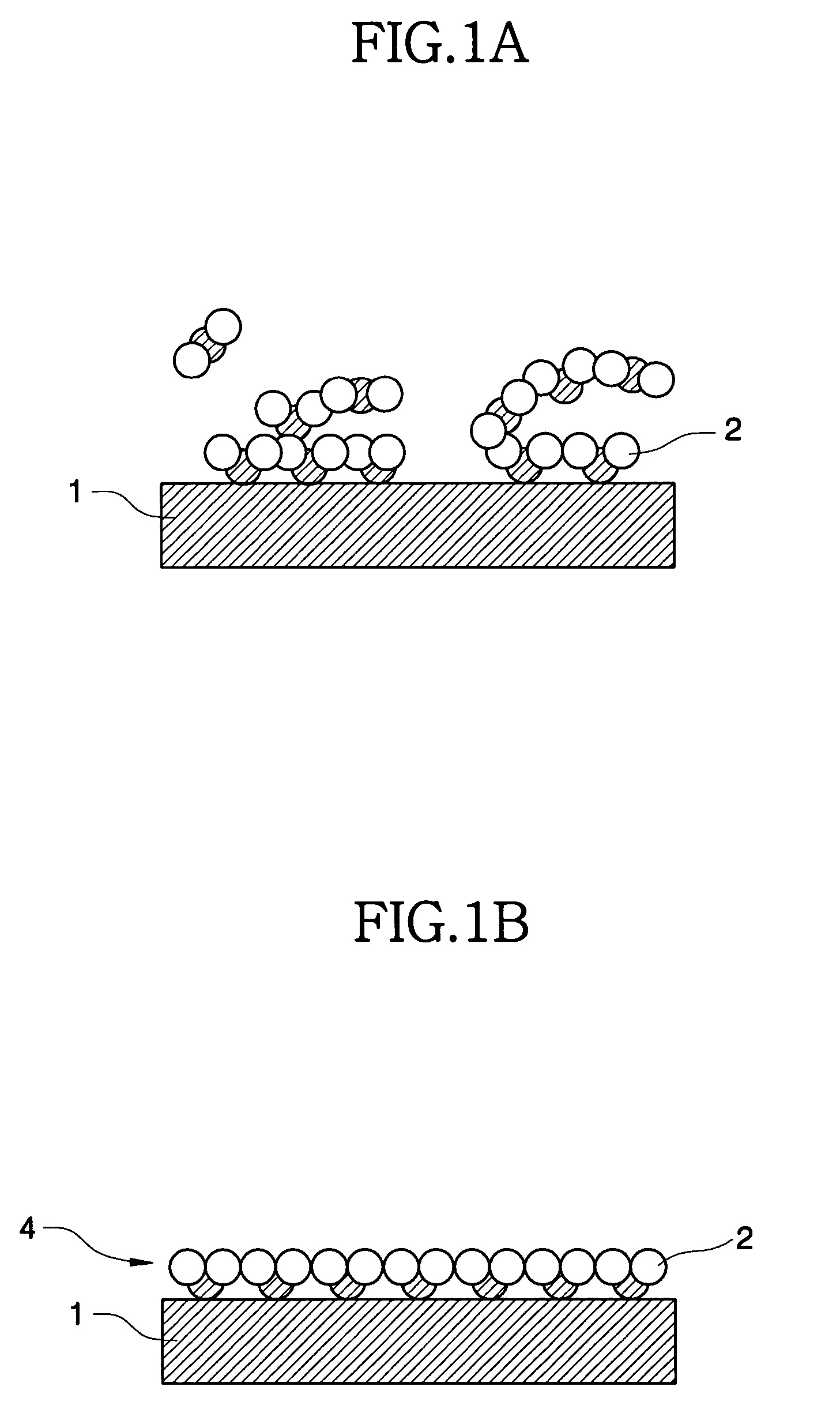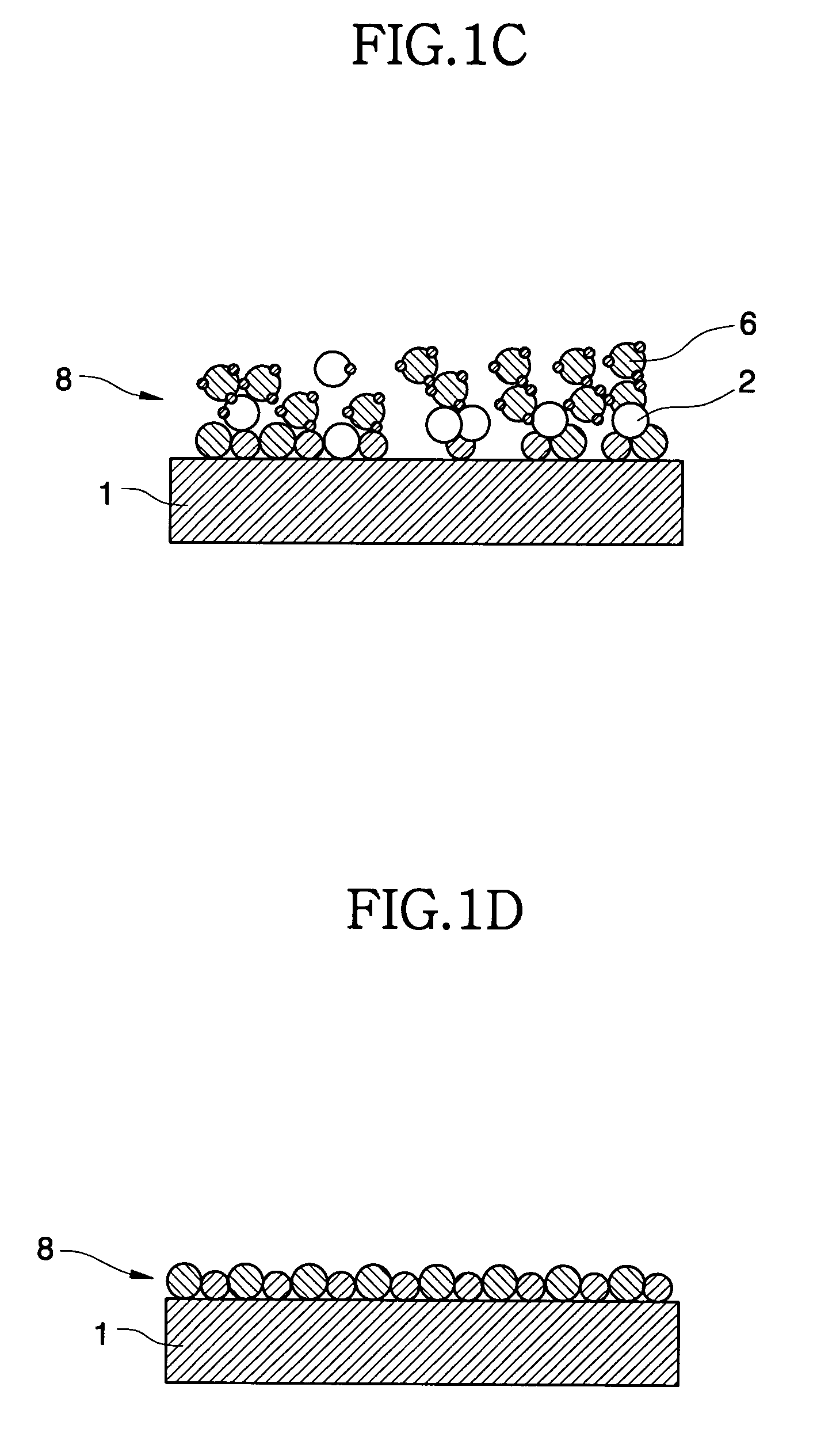Method of forming material using atomic layer deposition and method of forming capacitor of semiconductor device using the same
- Summary
- Abstract
- Description
- Claims
- Application Information
AI Technical Summary
Benefits of technology
Problems solved by technology
Method used
Image
Examples
experiment 1
[0093]A tantalum dielectric layer was formed on a cylindrical Ru lower electrode having an aspect ratio of about 15:1 using tetraethoxy tantalum dimethylamino-ethoxide (TAT-DMAE) as a tantalum precursor and O3 gas as an oxygen source. The dielectric layer was formed by an ALD method having a cycle of inflow of tantalum precursors→purging→inflow of O3 gas→purging. In this experiment, the temperature of the chamber was maintained at temperatures of 250° C., 300° C., 350° C. and 400° C. The thickness of the upper portion of a Ta2O5 layer deposited at each temperature (t1 of FIG. 8) and the thickness of the lower portion of the Ta2O5 layer (t2 of FIG. 8) were measured. The results of these measurements are shown below in Table 1.
[0094]
TABLE 1Classification250° C.300° C.350° C.400° C.t1 (Å)240103233244t2 (Å)220102207228
[0095]As shown in Table 1, the thicknesses of the deposited layers vary with temperature. Notwithstanding these differences, it was observed that the Ta2O5 layer exhibited...
PUM
| Property | Measurement | Unit |
|---|---|---|
| Temperature | aaaaa | aaaaa |
| Temperature | aaaaa | aaaaa |
Abstract
Description
Claims
Application Information
 Login to View More
Login to View More - R&D
- Intellectual Property
- Life Sciences
- Materials
- Tech Scout
- Unparalleled Data Quality
- Higher Quality Content
- 60% Fewer Hallucinations
Browse by: Latest US Patents, China's latest patents, Technical Efficacy Thesaurus, Application Domain, Technology Topic, Popular Technical Reports.
© 2025 PatSnap. All rights reserved.Legal|Privacy policy|Modern Slavery Act Transparency Statement|Sitemap|About US| Contact US: help@patsnap.com



